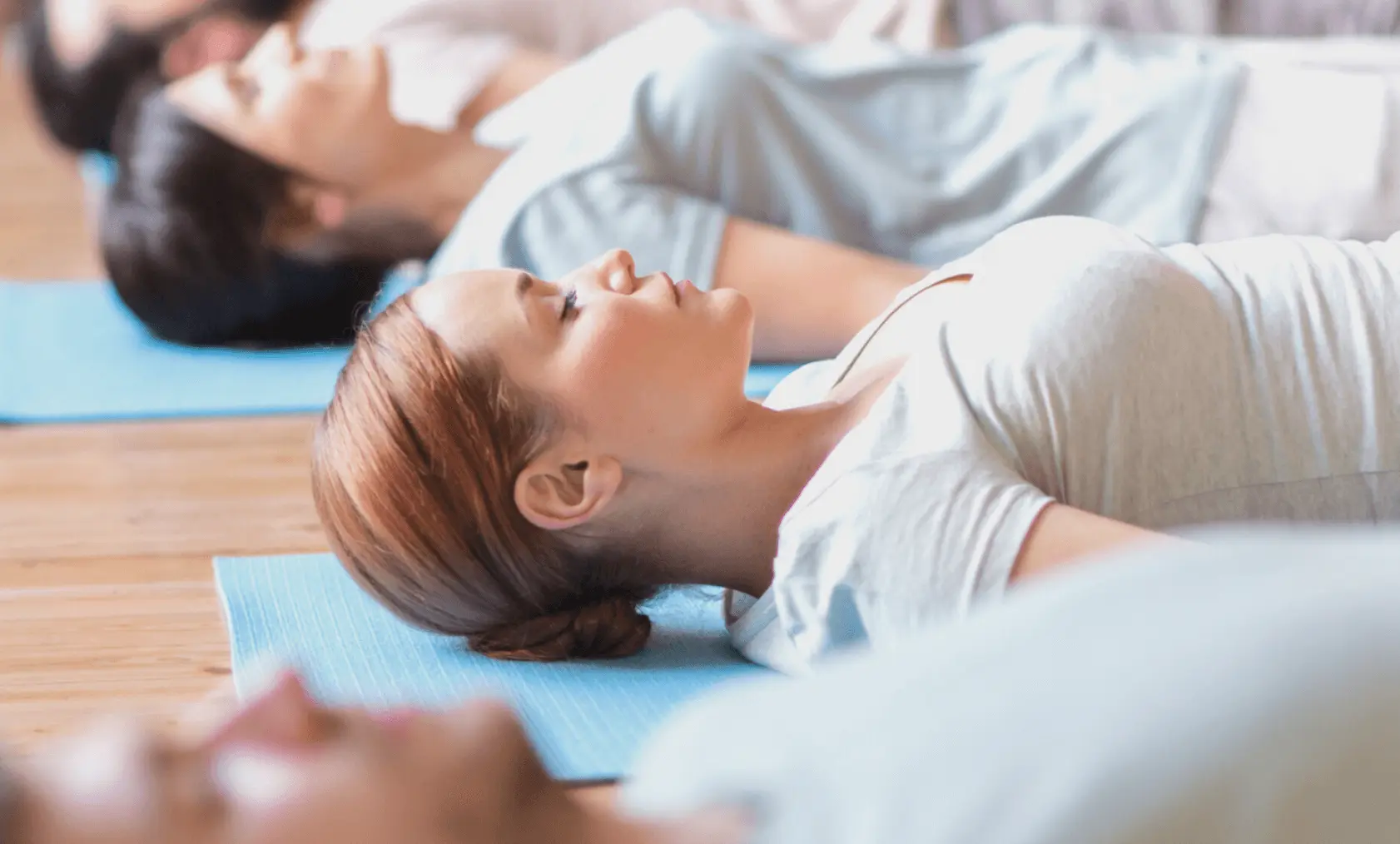The Power of Yoga Nidra: Restorative Relaxation

Yoga Nidra Meditation - Everything You Need to Know
The ultimate feeling of bliss, that helps you build a connection with the supreme, is it just a myth or a real possibility? While meditation has the divine power of keeping you in sync with nature, it also helps you unwind and rejuvenate for a new beginning. Doing yoga for sleep has multiple benefits, that restores your mind, body and soul. From energising you for the day ahead to relaxing you after a long time, yoga nidra can help you achieve all this.
But what is Yoga Nidra? And how exactly does it work towards your well-being?
What is Yoga Nidra or Yogic Sleep?
Yoga Nidra, or nidra meditation, is a meditative sleeping technique that is known to relax your body, and enhance your sleep quality. This potent yogic technique helps you connect with your core. It transports your to a state of deep consciousness wherein your body, mind, and soul are in alignment with one another. When you are in that utter state of focus, free from all worldly distractions, your body and mind automatically relax and calm down. A few minutes of this meditation allows you to experience the sleep of a few hours easily.
How to Prepare Yourself for the Nidra Meditation
Like any meditation, the basic process of preparing yourself for yoga nidra for sleep is the same. Complete your tasks and sit down in one place once you are done for the day. Do not continue worrying about your chores or your workplace concerns. Once you gather yourself from everything, start focusing on calming yourself down. Close your eyes, take any comfortable position of your choice and practice yoga for insomnia. Remember to wear comfortable clothing to prevent any undue distraction.
Process of Doing Yoga Nidra Meditation
The process of doing yoga nidra for sleep and anxiety is pretty simple.
- Close your eyes and sit down against a wall, or lie down in Shavasana.
- Face the palms upwards and keep your body loose.
- Inhale and exhale gradually, concentrating on your breathing.
- Relax your body, starting from your toes and going upwards. Focus on each body part and release the stiffness as you move upward.
- Inhale and exhale in a pattern to release any additional stiffness in any particular area.
- Continue doing this for some time until you feel relaxed in your entire body.
- Remain in this position and wake up rejuvenated the next day.
Ideally, this meditation takes only 10 minutes of your time, but it energises your body for a couple of hours easily. Practising this daily can substantially improve your sleep quality and help you reduce stress.
Yoga Poses You Can Try For A Peaceful Sleep
Meditation not only relaxes your mind but also helps you loosen out your stress aggravations. If you are someone who cannot enjoy a night’s sleep peacefully, then you should definitely give Yoga Nidra a try. However, apart from that, there are a few yoga poses for sleep that you can try to relax uninterruptedly:
Vajrasana - The Thunderbolt Pose
Inspired by Lord Indra’s weapon, the Vajra, this pose is extremely simple and known for several benefits. It promotes calmness and eases tension in your body, paving the way for a restful night. All you need to do is sit back on your heels, place your hands on your knees and keep your spine straight. Do this for a few minutes every night before sleeping, and you will notice an improvement. Vajrasana primarily aids digestion, reducing discomfort that might disrupt your sleep.
Shishuasana - The Child's Pose
The baby pose found its way into yogic texts, mainly due to its innocence. Shishuasana is a nurturing pose that releases tension in your back, neck, and shoulders. It helps in calming your nervous system and prepares your body for a serene sleep. To do this, kneel on the mat, sit back on your heels, and try to stretch your arms forward. Rest your forehead on the ground and remain in this pose for a few minutes.
Supta Kapotasana - The Reclining Pigeon Pose
Supta Kapotasana, also known as the reclining pigeon pose, releases tension from your hips and lower back. In today’s world, these are the major areas that are prone to tightness from stress and working conditions. This pose relaxes you and eases you into a peaceful slumber. Simply lie on your back and cross one ankle over the opposite knee. Then, gently draw the knee towards your chest. Do this a few times, and you can sleep comfortably.
Supta Matsyendrasana - The Reclining Spinal Twist
Supta Matsyendrasana targets your spine, promotes spinal flexibility and alleviates any stiffness accumulated during the day. It releases your built-up tension, setting the stage for a night of tranquil sleep. For this, lie on your back, bring one knee across the body, and extend the opposite arm in the opposite direction. Repeat the same for the other side and enjoy doing yoga for good sleep.
Shavasana - The Corpse Pose
Shavasana, the lying pose or the corpse pose, is the ultimate pose of yoga nidra for sleep. It helps your body and mind to unwind completely. Reduce stress, calm your nervous system, and promote a sense of deep relaxation with this bedtime choice. Free from worldly cares, lie flat on your back, keep your arms by your sides, and palms facing up and focus on your breathing.
Once you incorporate these yoga poses into your nightly routine, you will eventually find yourself drifting into a more peaceful and rejuvenating sleep.
Ways Yoga Nidra Benefits You
The ancient texts have described in detail the benefits of practising regular yoga and meditation. Several learned sages indulge in these practices for a long period of time to empower their bodies and strengthen their minds. Yoga nidra benefits you in a similar way and more:

- Helps with Insomnia - The constant need to remain occupied has plunged many people into insomnia. Yoga nidra for insomnia is extremely beneficial and has seen positive results in many.
- Relaxes Your Body from Fatigue - The relaxation techniques involved in yoga nidra release fatigue and exhaustion from your body. If you are someone who gets tired easily due to excess physical work, or if your thoughts never leave your side, then Yoga Nidra is a beneficial asset for you. It also prevents the build-up of several disorders like chronic pains, joint stiffness, and muscle cramps.
- Reduces Stress and Anxiety - The most important benefit of yoga nidra is that it calms your mind and reduces stress. With synchronised breathing, you can feel the anxiety leaving your body, allowing yourself to experience serenity. It also alleviates headaches, nausea, and other anxiety factors.
- Promotes Uninterrupted Sleep - Not just for insomnia, Yoga Nidra also benefits people who can sleep easily but not continuously. A night of uninterrupted sleep is a bliss that many people dream of these days, but it is possible with this technique.
- Used to treat PTSD in severe cases - In some cases, patients with severe PTSD were made to practise Yoga Nidra, which considerably helped them manage their stress and anxiety and calm their trigger factors.
Thanks for reading
Tags:
Previous Article

13 min read
•18 Mar 2024Next Article
13 min read
•18 Mar 2024




